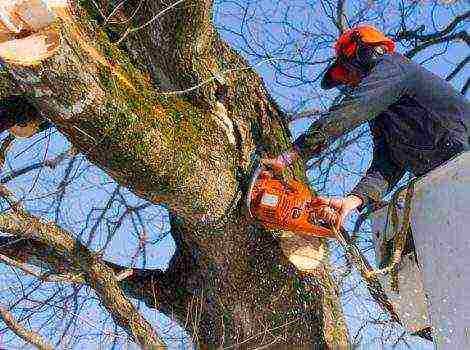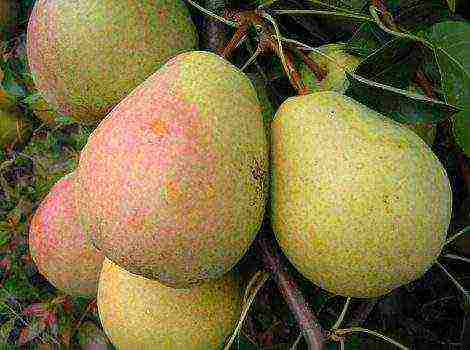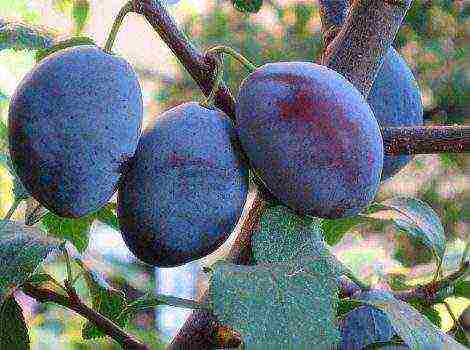Content
Description and varieties of Chinese pear
Asian, Japanese, Taiwanese, sand, Neshi - as soon as they call a Chinese pear! This foreign fruit appeared on the Russian market relatively recently, but has already managed to gain popularity due to its pleasant and unusual taste.... In addition, the Chinese pear is easy enough to grow, and its fruits have a lot of useful properties.
Origin
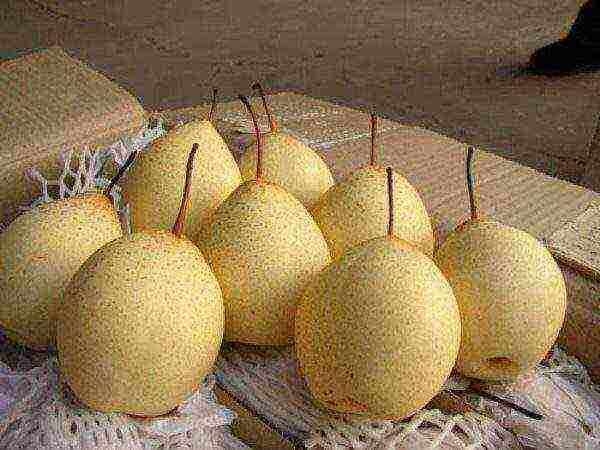
The modern Chinese pear originates from the Yamanashi pear. The hard and tart fruit was sour and tasteless and was not in great demand. But thanks to the efforts of Chinese breeders, a new species was developed, devoid of excessive astringency, but at the same time retaining the best taste characteristics.
What does a Chinese pear look like?
The fruits of the Chinese pear are round, dense. The color depends on the variety - pears can be either light yellow or even pale greenish, or bronze. The rind is covered with brownish specks, similar to grains of sand (which is why the pear is called sand). The pulp is white, juicy, but firm and crunchy.
How to choose a ripe fruit?
For the Chinese pear, the selection criteria are the same as for other pear varieties: taste, density, rind. It is better to choose in the market and not in the off-season, since the market has the opportunity to taste the fruit before buying. The ripe fruit tastes slightly sour, the pulp is free of lumps, very juicy... The fruit should be firm, but by no means soft. Also, it should not deform under the fingers. A ripe Chinese pear has a smooth peel with specks, but at the same time without dark spots, and even more so without traces of mold.
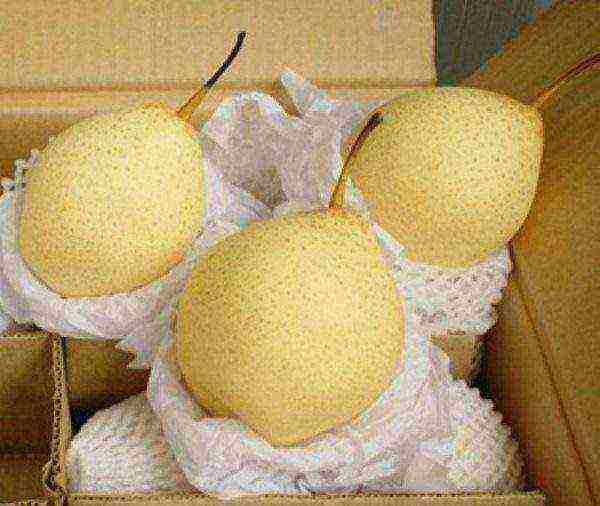
Unripe fruits often arrive on store shelves, and in order for the pear to "ripen", it is required to hold it at room temperature. An unripe Chinese pear can also be placed in a paper bag with an apple or banana - as practice shows, "ripens faster together." It should be remembered that it is better to store ripe fruits in the refrigerator, since they will quickly deteriorate in the heat, and in low temperatures, the shelf life increases from one to three weeks.
About the benefits and harms of this type of pear
Like any vegetable or fruit, the Chinese pear is a source of minerals, vitamins, water, and fiber. The high content of vitamin C strengthens the immune system, while calcium is responsible for strengthening the teeth, nails and hair. Chinese pear is recommended to eat during pregnancybecause the folic acid in the pulp benefits both the mother and the unborn baby.
In addition, the Chinese pear:
- Improves digestive system;
- Promotes the growth of bone and muscle tissue due to the high content of phosphorus;
- Normalizes the activity of the cardiovascular systemss and prevents the risk of stroke and heart attack;
- Supports Cellular Balance and prevents the formation of cancer.
It is also necessary to mention the low calorie content of the Chinese pear: there are 140 calories per fruit weighing 200-300 grams. This makes the Chinese pear an ideal dietary supplement.
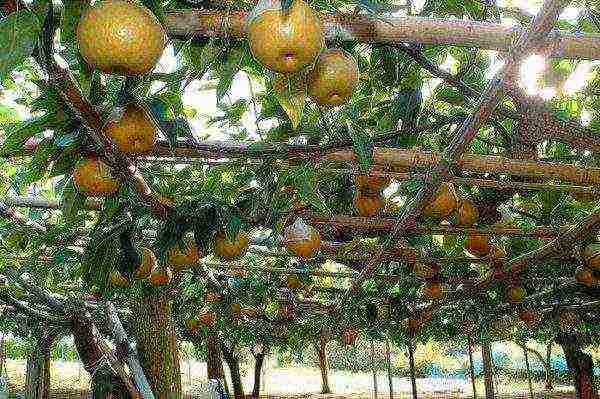
However, a healthy Chinese pear can cause significant harm to the body., if you do not take into account a few nuances:
- You can't eat a pear on empty stomach;
- It is not recommended to eat the fruit together with meat or dairy products. - it will cause severe indigestion;
- If present individual intolerance for a Chinese pear, you must stop using it;
Varieties
Currently, there are several hundred varieties of Chinese pears with different sizes and tastes of fruits, different ripening periods and degrees of yield. However, on the territory of Russia with its difficult climatic conditions, less than a dozen varieties have spread. Distinctive features of these varieties are the undemandingness of trees to soils, a high degree of productivity and increased frost resistance.... In addition, trees show resistance to drought conditions and pests.
On the territory of Russia, the following varieties of Chinese pears are most often grown:
- Morning freshness
- Jose
- Scythe
- Olympic (there are other names: Korean giant or Great Korean)
Let's dwell on each of them in more detail.
Morning freshness

This is a summer variety - pears can be harvested in the first half of August. Self-fertile. The tree gives the best yield if the pollinators are Chinese pear varieties such as Oriental Golden, Bronze or Kieffer. Begins to bear fruit quickly enough - 3-4 years after planting... The variety is characterized by resistance to fungus and bacterial diseases; in the southern regions it tolerates low temperatures well. Fruits are small, round, weighing about 115-180 grams, yellow in color.
Scythe

Another summer variety, the removable maturity of which occurs in the second half of July. The variety is frost-resistant, resistant to pests.
The tree begins to bear fruit in the second year... The fruits of the variety are small - 130-160 grams, but very rich in bronze color. The pulp is sweet, juicy.
Jose
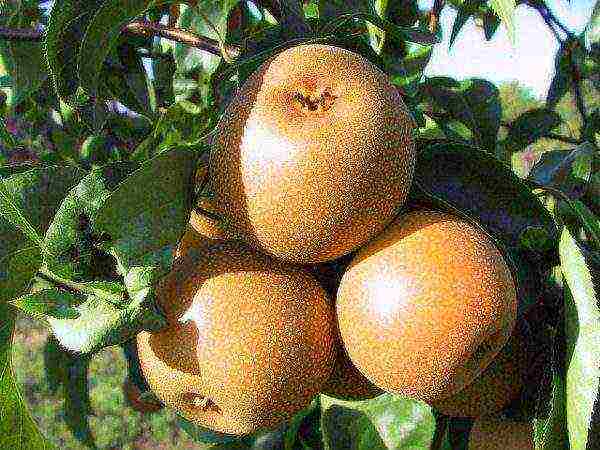
Despite the fact that the variety is self-pollinating, the proximity of other Chinese pears will contribute a lot to an excellent harvest. Autumn variety, harvesting begins in the second half of August.
The tree begins to bear fruit early - 2-3 years after planting. Distinctive qualities: frost resistance, pest resistance... The fruits are bronze-brown, with a very dense, but juicy sweet pulp. The weight of a pear can be up to 300 grams.
Olympic
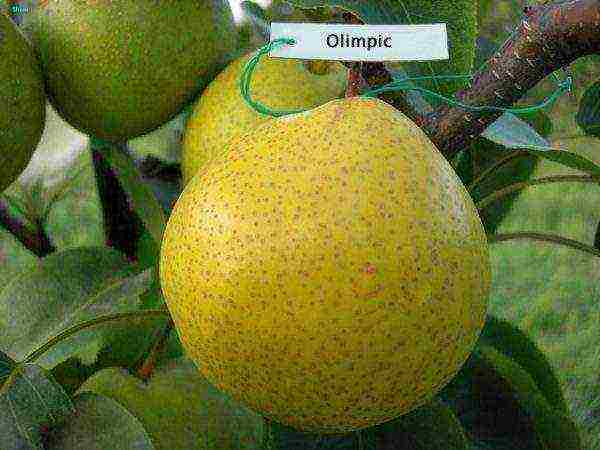
A fairly popular autumn variety of Chinese pear due to its characteristics - early maturity, resistance to pests and low temperatures. This variety is not afraid of either scab or powdery mildew. The tree begins to bear fruit already in the second year with rounded fruits of a pleasant golden color with small gray specks... Each fruit weighs 160 grams.
The popularity of the Chinese pear in Russia is growing rapidly... This environmentally friendly variety is gaining popularity both for its quick adaptation to climatic and soil conditions, and for its wonderful taste and aroma of fruits. If you want to plant a tree that will soon delight you with its fruits, opt for a Chinese pear - you will not regret it!
